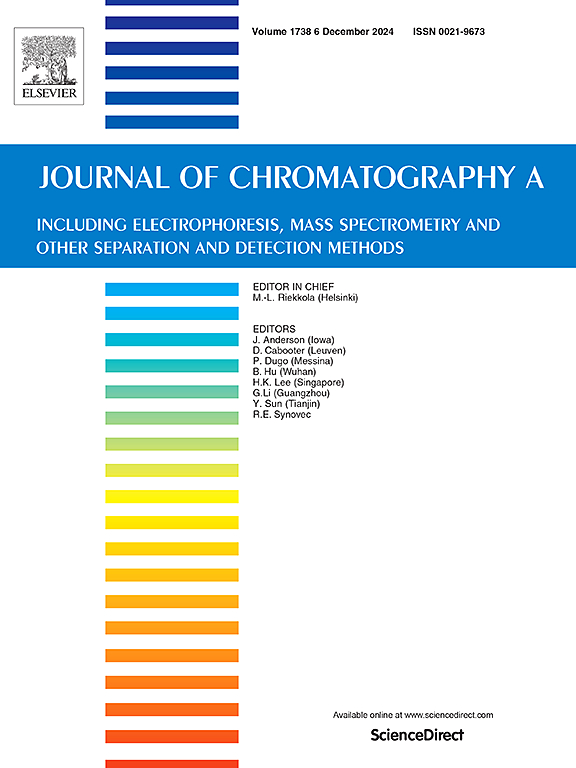Direct injection UPLC-MS/MS method for analysing 77 compounds including human biomarkers, illicit drugs, new psychoactive substances and metabolites in wastewater
IF 3.8
2区 化学
Q1 BIOCHEMICAL RESEARCH METHODS
引用次数: 0
Abstract
Wastewater analysis technology has emerged as a promising tool for monitoring illicit drug consumption. However, the current reliance on the solid-phase extraction (SPE) pre-treatment method presents significant challenges for widespread adoption and high-throughput monitoring, as it consumes a large amount of time and labor as well as requires specialized instruments. This study has developed a direct injection (DI) technique for UPLC-MS/MS, enabling the detection of 77 compounds encompassing metabolites of human biomarkers, illicit drugs, and new psychoactive substances. The DI method underwent rigorous optimization and validation, demonstrating a lower limit of quantitation (LLOQ) ranging from 1 ng L–1 to 100 ng L–1 and a limit of detection (LOD) ranging from 0.5 ng L–1 to 80 ng L–1. The SPE method comprising two common SPE cartridges and the DI method were compared in terms of matrix effects, recoveries, and accuracies through analyzing spiked wastewater samples. The DI method exhibited superior capability in detecting a wider range of compounds while being more time-efficient, and it also significantly demonstrated a better recovery, lower matrix effect, and lower relative error in spiked samples. Real wastewater samples from 25 wastewater treatment plants (WWTPs) were analyzed using this method. This study expanded the targets species of wastewater analysis by DI method and provided practical strategies for conducting large-scale drug monitoring.

直接注射UPLC-MS/MS方法分析废水中77种化合物,包括人体生物标志物、违禁药物、新型精神活性物质和代谢物。
废水分析技术已成为监测非法药物消费的一种很有前途的工具。然而,目前对固相萃取(SPE)预处理方法的依赖对广泛采用和高通量监测提出了重大挑战,因为它消耗大量的时间和劳动力,并且需要专门的仪器。本研究开发了一种用于UPLC-MS/MS的直接注射(DI)技术,可以检测77种化合物,包括人类生物标志物的代谢物、非法药物和新的精神活性物质。该方法经过严格的优化和验证,定量下限(LLOQ)为1 ~ 100 ng L-1,检出限(LOD)为0.5 ~ 80 ng L-1。通过对加标废水样品的分析,比较了由两个常见固相萃取筒组成的固相萃取法和DI法的基质效应、回收率和准确度。该方法检测范围更广,时间效率更高,回收率更高,基质效应更低,相对误差更小。采用该方法对25家污水处理厂的实际污水样本进行了分析。本研究扩大了DI法分析废水的靶点种类,为开展大规模药物监测提供了切实可行的策略。
本文章由计算机程序翻译,如有差异,请以英文原文为准。
求助全文
约1分钟内获得全文
求助全文
来源期刊

Journal of Chromatography A
化学-分析化学
CiteScore
7.90
自引率
14.60%
发文量
742
审稿时长
45 days
期刊介绍:
The Journal of Chromatography A provides a forum for the publication of original research and critical reviews on all aspects of fundamental and applied separation science. The scope of the journal includes chromatography and related techniques, electromigration techniques (e.g. electrophoresis, electrochromatography), hyphenated and other multi-dimensional techniques, sample preparation, and detection methods such as mass spectrometry. Contributions consist mainly of research papers dealing with the theory of separation methods, instrumental developments and analytical and preparative applications of general interest.
 求助内容:
求助内容: 应助结果提醒方式:
应助结果提醒方式:


